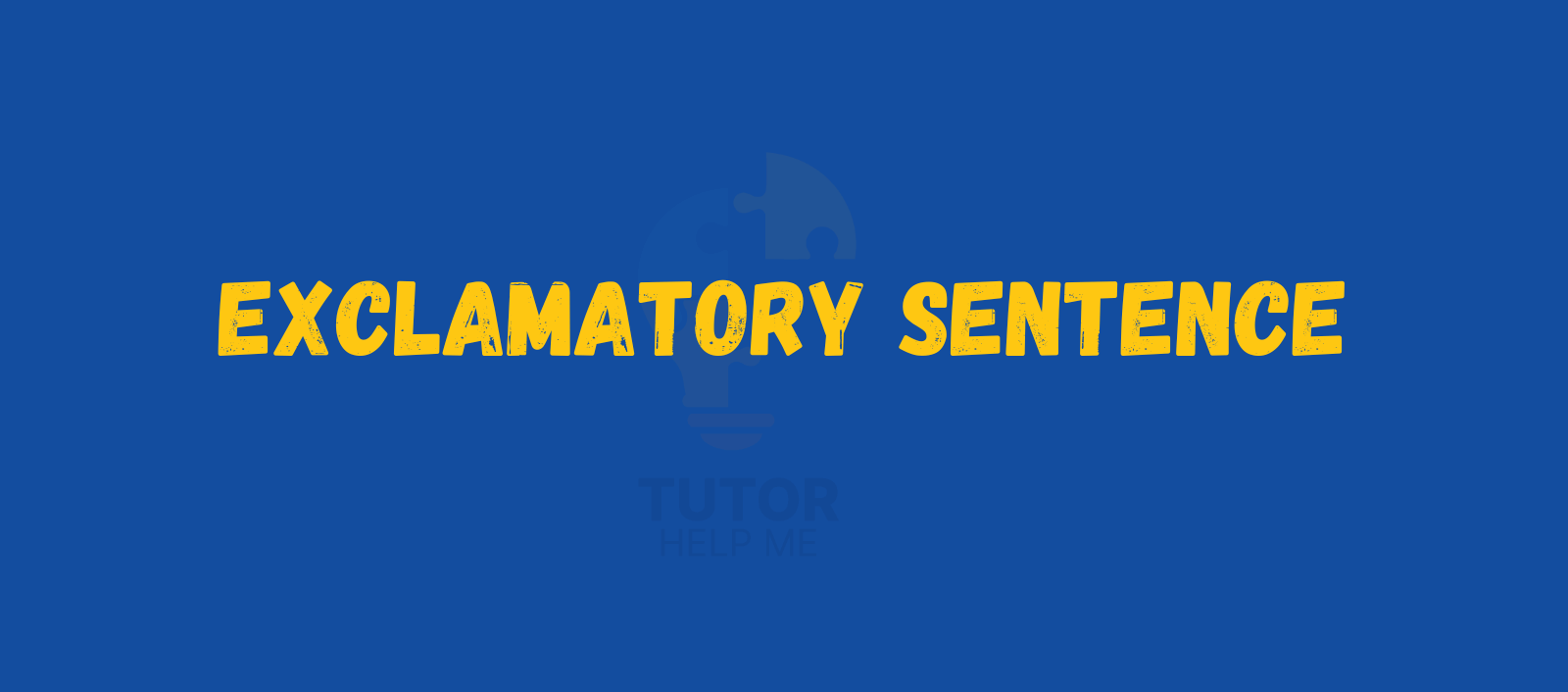Language becomes powerful when it carries emotion. That’s where exclamatory sentences come in. They help express surprise, excitement, anger, happiness, or any strong emotion in just one line.
You may already use exclamatory sentences every day—without even realising it. In this blog, you’ll learn what exclamatory sentences are, how they are used, and how to form them correctly with helpful examples.
What Is an Exclamatory Sentence?
An exclamatory sentence is a sentence that shows strong emotion or feeling. It ends with an exclamation mark (!), and it can express emotions like:
- Surprise
- Excitement
- Anger
- Happiness
- Admiration
- Fear
“Learn English Grammar with our 1-On-1 English Tutors.”
Examples of Exclamatory Sentences:
- What a beautiful sunset!
- That’s amazing!
- I can’t believe it!
- Watch out!
- This is unbelievable!
These sentences are powerful and grab attention instantly.
Structure of an Exclamatory Sentence
The basic structure of an exclamatory sentence is similar to a declarative sentence, but the tone and punctuation change.
Structure:
Subject + Verb + Object + (!)
Examples:
- You did a great job!
- He won the competition!
Some exclamatory sentences begin with “what” or “how”:
- What a game that was!
- How sweet of you!
Common Uses of Exclamatory Sentences
Exclamatory sentences are used to:
Show Excitement
- We’re going to Paris!
- That’s incredible!
- You got the job!
- I passed my exam!
- This is the best day ever!
Express Surprise
- What a surprise!
- You’re here already!
- That happened so fast!
- I didn’t expect that!
- You scared me!
Show Anger or Frustration
- Stop it right now!
- I told you already!
- This is ridiculous!
- That’s enough!
- Don’t touch that!
Express Admiration or Praise
- What a lovely dress!
- You did great!
- That was fantastic!
- He’s so talented!
- Amazing performance!
Show Fear or Alarm
- Watch out!
- Get down!
- Look behind you!
- That’s dangerous!
- Oh no!
Tips for Using Exclamatory Sentences
- Use them to highlight emotion, but don’t overuse them.
- One exclamation mark is enough — avoid using multiple (!!).
- They are best used in informal writing, dialogue, or expressive content.
- In formal writing (essays, reports), use them carefully or not at all.
Why Choose TutorHelpMe?
Expert Tutors – Our tutors are highly qualified in English grammar, writing, and speaking skills.
1-on-1 Online Lessons – Focused support tailored to each student’s needs and learning style.
Flexible Scheduling – Learn at your own pace, anytime and anywhere.
Affordable Pricing – High-quality tutoring at budget-friendly rates for all levels.
Comprehensive Subject Coverage – English, Maths, Science, and more.
Clear Progress Tracking – Monitor improvements with regular feedback and updates.
Homework and Exam Help – Targeted support for better academic performance.
Confidence Building – Improve language fluency, sentence structure, and writing clarity.
Trusted Across the UK – Students and parents rely on TutorHelpMe for real results.
Friendly & Supportive Tutors – Learn in a comfortable and motivating environment.
Conclusion
Exclamatory sentences add emotion, excitement, and intensity to your communication. They’re easy to use and instantly make your words more engaging.
From daily talk to creative writing, these sentences help you express exactly how you feel — with just a few words and a punctuation mark.
So next time you’re surprised, happy, or amazed — use an exclamatory sentence and say it loud!
Read more What is an Affirmative Sentence? Formation and Examples
FAQ’s
Can an exclamatory sentence be one word?
Yes! Words like “Wow!”, “Oh no!”, or “Amazing!” can function as complete exclamatory sentences.
Can I use more than one exclamation mark?
In formal writing, no. Only one should be used. Multiple marks are informal and best for casual texts or ads.
What’s a good way to practise exclamatory sentences?
Describe exciting or emotional moments from your day and rewrite them using strong exclamatory sentences with feeling.

